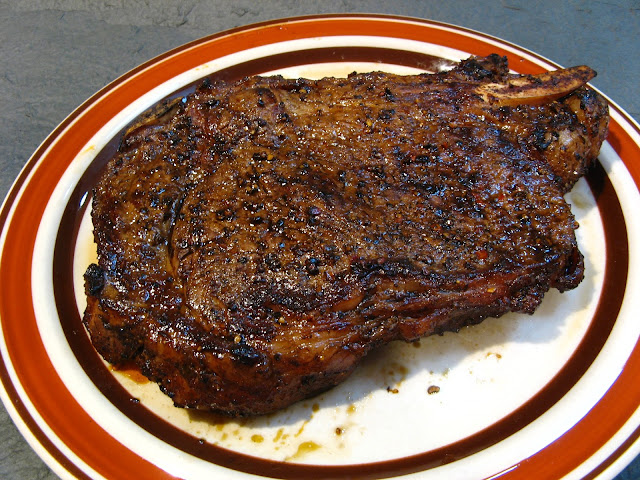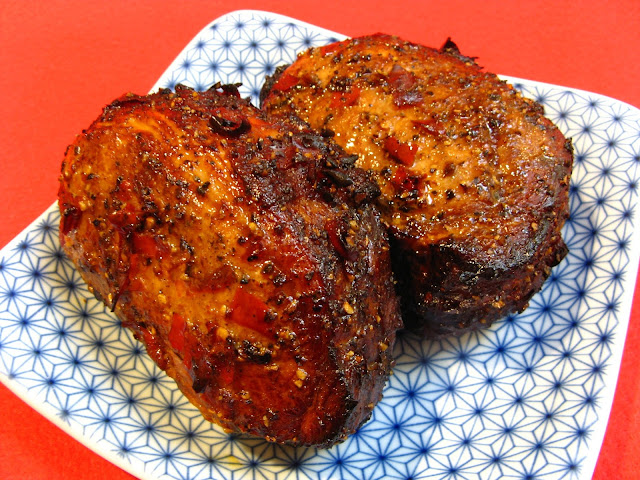If
you like your steak a little spicy, this easy to make recipe should make you
happy since it uses three peppercorns: black, white, and Szechuan. I keep
pepper grinders with each of these whole peppercorns in my pantry, so it’s easy
to grind just the amount desired to season the steak. If you don’t have the whole
peppercorns in separate grinders, you can easily throw the peppercorns into a
spice grinder. The outer surfaces of the steak are first coated with sesame oil
and then Lawry’s Seasoned Salt (or just plain salt) before applying the ground
peppers.
I’ve
totally changed the way I grill beef steaks after reading the method used by America’s
Test Kitchen. The recipe is for porterhouse steaks, but it can be
used for other cuts of beef and other meats (e.g. pork). Their method produces
a charred exterior with a tender medium-rare interior, and uses both the oven
and the grill. The basic premise for their method is to preheat the steak in the
oven before grilling the steak over a hot fire to produce the desired results. I
adapted the method to use the grill only to produce similar results. In my
previous grilling recipes, I would place the meat over a hot fire first to char
the outside and then move the meat to the cool side of the grill to roast
and/or smoke. This produced a charred exterior and medium-rare interior, but
the medium-rare interior was sandwiched between a well-done exterior, whereas
the America’s Test Kitchen method produced a consistent medium-rare interior
without the well-done exterior layers.
So
my adaptation is to reverse the previous order of cooking the meat to first
pre-heat the meat on the cool side of the grill to smoke it before moving to
the hot side to char. This produces similar results to America’s Test Kitchen’s
original method even though the fire is reduced in heat when the meat is
charred after pre-heating, and you don’t need to use your oven. The new method
does take longer to cook the meat, but it’s worth the extra time to get the
desired results. The cooking time varies with the thickness of the meat,
temperature of the fire, and your previous experience with the barbeque grill,
so you’ll have to experiment a little to get the desired results. I think if
you try cooking steaks using my adapted method, you’ll also change the way you
grill meat.
Enjoy!




















